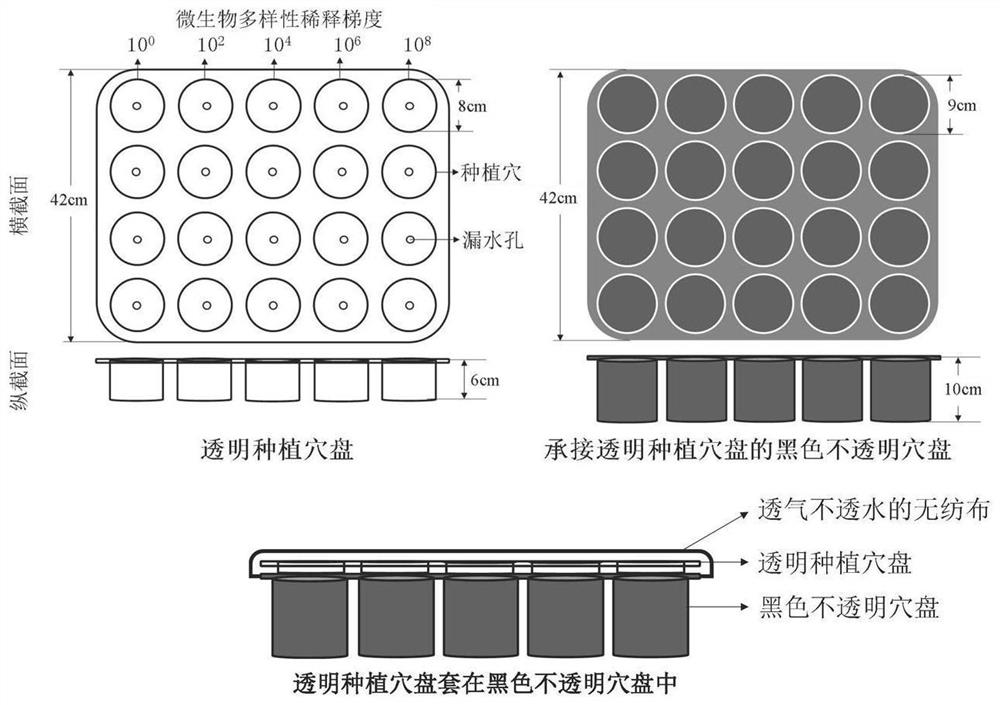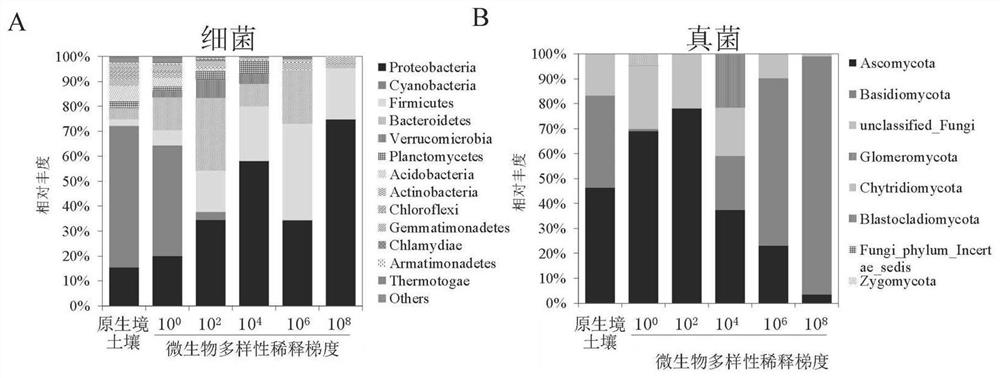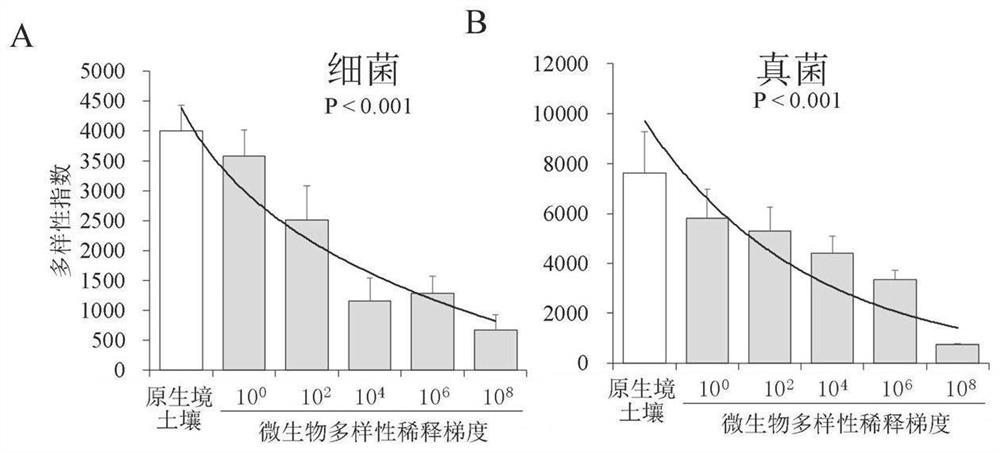Research method of soil microbial diversity and plant stress interaction
A technology of soil microorganisms and diversity, applied in the field of microorganisms, can solve problems such as time-consuming, cumbersome operations, and inability to create physical and chemical conditions, and achieve the effect of simple operation and short time-consuming
- Summary
- Abstract
- Description
- Claims
- Application Information
AI Technical Summary
Problems solved by technology
Method used
Image
Examples
Embodiment 1
[0048] A visual research method for the interaction between soil microbial diversity and plant adversity, the steps are as follows:
[0049] (1) Select forest soil that has not used chemical fertilizers and pesticides, use a 10cm diameter, 30cm depth sterilized soil drill to collect surface forest soil, the collection depth is 0-30cm, and a total of 20 points are randomly selected, and the soil samples are placed in a ziplock bag Then put the ziplock bag into an insulated box with ice packs;
[0050] (2) Sieve the soil sample collected in step (1) with a sterilizing sieve with an aperture of 2mm, and then use a sterile cloth bag or plastic bag to fully mix all the soil to obtain the in situ soil;
[0051] (3) Sterilize the original soil soil under gamma rays of 50kGy intensity to obtain sterile soil;
[0052] (4) Take 200g of native soil and put it into a sterile beaker, add 500mL of sterile deionized water, and use a sterile glass rod to fully stir it evenly. 10 0 、10 2 、...
Embodiment 2
[0058] A visual research method for the interaction between soil microbial diversity and plant adversity, the steps are as follows:
[0059] (1) Select forest soil that has not used chemical fertilizers and pesticides, use a 10cm diameter, 30cm depth sterilized soil drill to collect surface forest soil, the collection depth is 0-30cm, and a total of 20 points are randomly selected, and the soil samples are placed in a ziplock bag Then put the ziplock bag into an insulated box with ice packs;
[0060] (2) Sieve the soil sample collected in step (1) with a sterilizing sieve with an aperture of 1.5 mm, and then use a sterile cloth bag or plastic bag to fully mix all the soil to obtain the in situ soil;
[0061] (3) Sterilize the original soil soil under gamma rays of 40kGy intensity to obtain sterile soil;
[0062] (4) Take 300g of native soil and put it into a sterile beaker, add 500mL of sterile deionized water, and use a sterile glass rod to fully stir it evenly. 10 0 、10 ...
Embodiment 3
[0067] A visual research method for the interaction between soil microbial diversity and plant adversity, the steps are as follows:
[0068] (1) Select forest soil that has not used chemical fertilizers and pesticides, use a 10cm diameter, 30cm depth sterilized soil drill to collect surface forest soil, the collection depth is 0-30cm, and a total of 20 points are randomly selected, and the soil samples are placed in a ziplock bag Then put the ziplock bag into an insulated box with ice packs;
[0069] (2) Sieve the soil sample collected in step (1) with a sterilizing sieve with an aperture of 2.5 mm, and then use a sterile cloth bag or plastic bag to fully mix all the soil to obtain the in situ soil;
[0070] (3) Sterilize the original soil soil under gamma rays of 60kGy intensity to obtain sterile soil;
[0071] (4) Take 100g of native soil and put it into a sterile beaker, add 500mL of sterile deionized water, and use a sterile glass rod to fully stir it evenly. 10 0 、10 ...
PUM
| Property | Measurement | Unit |
|---|---|---|
| Diameter | aaaaa | aaaaa |
| Diameter | aaaaa | aaaaa |
| Diameter | aaaaa | aaaaa |
Abstract
Description
Claims
Application Information
 Login to View More
Login to View More - R&D
- Intellectual Property
- Life Sciences
- Materials
- Tech Scout
- Unparalleled Data Quality
- Higher Quality Content
- 60% Fewer Hallucinations
Browse by: Latest US Patents, China's latest patents, Technical Efficacy Thesaurus, Application Domain, Technology Topic, Popular Technical Reports.
© 2025 PatSnap. All rights reserved.Legal|Privacy policy|Modern Slavery Act Transparency Statement|Sitemap|About US| Contact US: help@patsnap.com



